CIS 320 Exam 1
1/108
There's no tags or description
Looks like no tags are added yet.
Name | Mastery | Learn | Test | Matching | Spaced |
|---|
No study sessions yet.
109 Terms
What Layer # is the Application Layer in the OSI Model?
The Application Layer is Layer 7 in the OSI Model.
What Layer # is the Presentation Layer in the OSI Model?
The Presentation Layer is Layer 6 in the OSI Model.
What Layer # is the Session Layer in the OSI Model?
The Session Layer is Layer 5 in the OSI Model.
What Layer # is the Transport Layer in the OSI Model?
The Transport Layer is Layer 4 in the OSI Model.
What Layer # is the Network Layer in the OSI Model?
The Network Layer is Layer 3 in the OSI Model.
What Layer # is the Data-Link Layer in the OSI Model?
The Data-Link Layer is Layer 2 in the OSI Model.
What Layer # is the Physical Layer in the OSI Model?
The Physical Layer is Layer 1 in the OSI Model.
Which layer of the OSI model deals with Transmitting Signals?
The Physical layer
How do signals get transmitted when it comes to the Physical layer of the OSI model?
The signals get sent over a physical medium like a copper wire, or an optical fiber wire.
What is the difference between a copper wire, and an optical fiber wire?
Copper wires use electrical signals to transmit data, while optical fiber wires use light signals.
Copper wires are typically used for shorter distances and have lower bandwidth compared to optical fiber wires, which can transmit data over longer distances and have higher bandwidth.
Which layer of the OSI model deals with Sharks?
The physical layer. Sharks, or any animal can interfere with the physical wires in the ground
Which layer of the OSI model is the only level that interacts with nature / the environment?
The physical layer. Wires can become damaged from things such as natural disasters and animals biting or breaking the wires.
Nature is fickle (changes frequently). Aka mice can chew on wires.
What is a DSL cable?
It’s those really FAT and heavy cables that connect your home network to the internet.
Imagine it’s like the “pipeline” that allows your home to connect to the internet.
Which level of the OSI model deals with DSL cables?
The physical layer (layer 1)
What is Ethernet? / What is an ethernet cable?
It’s transmitted on a LAN (Local Area Network).
Best for small networks but it broadcasts signals to everyone on the network
What’s the purpose of Ethernet?
It connects devices like computers, printers, and routers together in a network so they can communicate and share information with each other.
You would do this in a home.
Which level of the OSI model deals with Ethernet?
Data-Link (Layer 2)
Limitations of an ethernet cable
100 meters in diameter and 250 maximum devices
What is Optical Fiber
Like an ethernet cable but much bigger.
Uses Light to conduct electricity. Ethernet uses copper
What is the purpose of optical fiber
It transmits data using light instead of electricity.
It's like using beams of light to send information incredibly quickly and over long distances, making it ideal for high-speed internet.
It also helps connect people and devices worldwide by enabling the fast and reliable transmission of data.
What layer of the OSI model deals with Optical Fiber
Physical Layer (Layer 1)
What is Copper Wire
A type of wire that transmits signals over a physical medium.
What is the purpose of copper wire
To transmit data over a physical medium.
Copper is used instead of other metals that conduct electricity (like silver) because copper is much cheaper than the other materials.
What layer of the OSI model deals with Copper wire
Physical Layer (Layer 1)
STP vs UTP
UTP (Unshielded Twisted Pair): A way to twist your wires. UTP is twisting them without a “shield” or a protective coating. This exposes the wire directly
STP (Shielded Twisted Pair): Same as UTP but this method is more secure for the wire as there is a protective coating applied to the outside of the wire.
Main purpose of the Data-Link Layer
Error Detection & Correction
Error-free data transmission over a single link (one hop)
Main purpose of the Physical Layer
Converts data into signals
Data cannot be sent through the internet, must be converted to a signal first
Tighter wire twists are better or worse?
Better. The tighter the wire twist, the faster the data rate.
What are the 4 properties that all good signals have?
Easily detectable at the receivers end
Resistant to noise
Efficiently uses bandwidth
Capable of multiplexing
What is Bandwidth?
The amount of data that can be transmitted over a network in a given amount of time.
Example is the width of a water pipe. The wider the pipe (bandwidth), the more water (data) can flow through
What is multiplexing?
Sending multiple signals over the same medium
Its how you can watch youtube, and type an essay at the same time.
What are the 2 types of signals that can be sent?
Digital & Analog
What is a digital signal?
Signals in which information is sent as either a 1 or a 0. Aka on or off
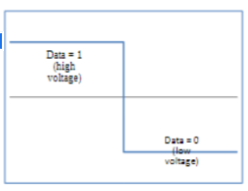
What is an analog signal?
Signals that have a continuous nature, not pulsing. How you imagine a sound wave to look is what it looks like.
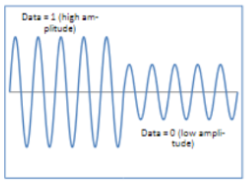
Label parts of a wave
Wavelength
Frequency
Amplitude
Crest & Trough
Wavelength: Distance between peak of one wave, to peak of the next
Frequency: How quickly the waves are coming and going. A lot of waves = high frequency and vice versa
Amplitude: The height of the wave
Crest: The highest part of the wave
Trough: The lowest part of the wave
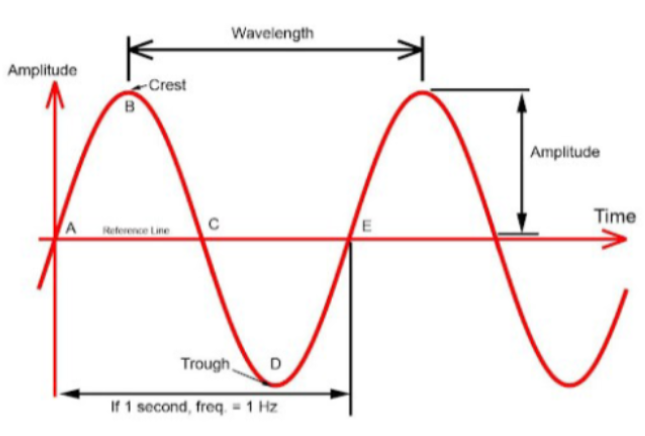
What does CSMA/CD stand for?
Carrier Sense Multiple Access with Collision Detection
What is the purpose of CSMA/CD
This is talking about LANs (Local Area Networks) or just any shared network.
In a LAN, any device can send data to any device.
Because of this, collisions of data and signals can happen
CSMA/CD is essentially a way for devices to avoid talking over each other.
What layer of OSI deals with CSMA/CD
Data Link Layer (Layer 2)
Carrier Sense Multiple Access with Collision Detection (CSMA/CD) explained in simple terms
Carrier Sense: Before you start speaking, you listen to check if someone else is already talking
Devices on a network will “listen” to see if the communication channel is clear before sending data.
-
Multiple Access: This is like everyone taking turns when they want to speak.
When devices want to use the same communication channel (a network cable), they wait their turn until the channel is open to send their data. This avoids talking over each other
-
Collision Detection: If 2 people try to talk at the same time, it leads to confusion.
When 2 computers talk at the same time, they both stop talking and wait for a random amount of time before talking again. This prevents continuous collisions
What is the Ethernet Frame, Preamble, and Start Frame Delimiter (SFD)?
Ethernet Frame: This is essentially the entire package or “message” that the sender intends to send over to the receiver
Preamble: Think of it as a "Hello" or a signal at the beginning of a message. It helps the receiving device know that a message is coming and gets ready to read it. AKA helps the sender & the receiver synchronize with each other
Start Frame Delimiter (SFD): Think of it as the first word or signal that says, "Here comes the actual message." It follows the preamble and marks the start of the real data.
What layer deals with the MAC Address
Data Link Layer (Layer 2)
What does MAC address stand for & What does it do?
Medium Access Control.
This is a method that determines who gets to send data over a shared medium (a wire)
The physical Address of your computer. This address cannot change.
What layer deals with NIC?
Data Link Layer (Layer 2)
What does NIC stand for, & what is its purpose?
Network Interface Card
If the MAC address is the thing that distinguishes your computer from others on the Internet, the NIC is the actual device that connects your computer TO the Internet.
It lets the device send & receive data on a network. It also has a MAC address associated with it.
NIC may ALSO perform MAC!!!
What are the limitations of CSMA/CD?
The CD stands for collisions detection. If a collision is detected, the computers that collided wait a random amount of time, before speaking again.
The maximum wait time is undefined and may even be infinite.
Also, CSMA/CD only works on smaller networks like home networks where all the devices are hooked up to a LAN or an ethernet
What are the 3 types of network devices that we talked about in the Data Link Layer?
Hub, Switch Router
What is a USB Hub and what layer of the OSI model does it fall under?
Literally, imagine just an extension cable where you can plug in a bunch of USB wires into one “Hub”.
Broadcasts data to all connected devices on the LAN.
Data Link Layer (Layer 2)

What is a switch & which layer does it occupy in the OSI model
It efficiently and intelligently forwards data packets within a LAN.
A switch is like a traffic cop for data. It receives data packets from devices connected to the LAN, and decides where to send each packet based on the MAC addresses of the devices.
Data Link Layer (Layer 2)
What is a Router, & what layer does it occupy in the OSI model?
A router connects different LANs, or networks in general, to the internet.
Network Layer (Layer 3)
Do switches operate outside of the Local Area Network (LAN)?
NO. A switch will only work inside its LAN. Imagine its the thing that allows all of your devices in your home to talk to each other.
What is the difference between a Switch & a Router?
A Switch (Data Link Layer) connects devices on a LAN to each other. Essentially sends data from one local device to another.
Ex. Texting your mom from your phone at home
-
A Router (Network Layer) connects those LANs to other LANs through the internet. Essentially sends data from one LAN to another.
Ex. Texting your friend Jordan from your own house and he’s at his house.
What is Hop to Hop error detection and what layer of the OSI model is it?
Its a way to make sure the data sent from one point to another in a computer network arrives without any mistakes or errors
Data Link Layer (Layer 2)
What is a checksum?
Error detection calculation The sender does an addition calculation and gets a value. Once the receiver receives the package, it does the same calculation. If the values match, there was no error.
____
Same as Cyclic Redundancy Check but not as complex since the equation is addition and not divison
Data Link Layer (Layer 2)
What is a Cyclic Redundancy Check? (CRC)
Error detection calculation. The sender does a division problem and gets a value. Once the receiver receives the package, it does the same calculation. If the values match, there was no error.
____
Same as checksum, but more complex since the equation is division and not addition.
Data Link Layer (Layer 2)
What is a Frame Check Sequence? (FCS)
FCS is the actual value that the sender and receiver get from performing either Cyclic Redundancy Check (CRC) or Checksum.
—
CRC and checksum are the equations. FCS is the value those equations produce.
__
Ex. 5 + 5 is the checksum | 5 / 5 is the CRC
10 is the FCS | 0 is the FCS
What layer # of the OSI model is the Network Layer?
Layer 3
What are the main responsibilities of the Network Layer?
So the Data Link layer creates that “Secure package” using the different error detection methods (Cyclic Redundancy check, checksum, and Frame Check Sequence)
__
The Network Layer actually
TRANSFERRING PACKETS OF DATA. Transfers that secure package of data from its source to the destination
ROUTING: Finds the best path from the source to the destination that the packets of data can take. This is like the WAZE driving app giving you the best route. There are multiple routes, but you wanna take the best one.
How does the Network Layer actually transport the data from the source to the destination?
Via IP (Internet Protocol) address
What is a router?
Device that connects 2+ networks and forwards packets to the appropriate connected network
What layer of the OSI model deals with IP Addresses.
Network Layer (Layer 3)
Do you need an IP address to connect to the internet?
Yes, every device on the internet or any network for the matter gets a unique IP address/
What are the 2 versions of IP address headers?
IPv4 (Older) & IPv6 (Newer)
What are IP Header fields?
They’re like labels and instructions on a package being sent. These labels help routers find the right addresses and handle the package correctly as it travels through the network.
What is the header length of an IP Header field?
The length of the labels and instructions on a package. This helps the routers know where to find the important information. Just talks about the length of the labels
What is the total length of an IP Header field?
This measures the total size of the package. This ensures the package doesn’t get too big for the network.
What is the difference between the total length of an IP header field and the header length of an IP header field?
The header length is just about the length of the labels, while the total length includes everything, both the labels and the contents of the package.
What is an ID when it comes to IP header fields?
This is like a tracking number for the package. If the package is too big and gets split into smaller parts, all of those parts will have the same tracking number so they can be put back together later.
What is a Flag when it comes to IP header fields?
They tell routers if the package can be split into smaller parts (fragmented) and if it has already been split.
__
Ex. Imagine u have instructions for how to handle a package that’s too big for one truck to carry. You’d need to split up the package into different trucls, and eventually put it back togehter
When it comes to IP Header Fields, how are Flags and ID’s related?
If the package being sent is too big, it gets split up (fragmented) into smaller pieces and given an ID. All the split-up contents have the same ID so they can be put together again later on.
__
Flags tell the router if the package contents have already been split up, and if the contents could be split up even more.
What is the maximum packet size of an IP header field?
65,536 bytes.
What is Fragment Offset when it comes to IP header fields?
If the package is split up into parts, this tells us where each part fits in the original package when you want to put the package back together.
__
Its like arranging the pieces of a puzzle. Every piece had an original spot before being broken up
What is Time To Live (TTL) when it comes to IP header fields?
This number gets smaller each time the package passes through a router. If the number reaches zero before making it to its intended destination, its removed from the network to keep things running smoothly. Its like a set expiration date.
Does the Checksum equation happen at every router? (aka hop to hop)
Yes. For example, if a package is being sent and there are 5 hops it has to go through to reach its destination, the checksum equation will happen at every stop, as well as the final destination
What are Options when it comes to IP header fields?
They’re like extra instructions that can be added to the package, but they’re not often used
What is a Standard Network Topology?
A blueprint or design for how devices in a computer network are connected to each other. It defines the layout or structure of the network, showing how data can flow between devices. Think of it as the plan that outlines how all the computers, printers, and other devices in an office or home network are linked together.
What layer of the OSI model deals with Standard Network Topologies?
Data Link Layer (Layer 2)
When it comes to Standard Network Topologies, what is a Bus Topology?
Think of it like a long bus route. All devices (passengers) are connected to a single cable (bus), and data travels along that cable. If one device wants to talk, it broadcasts its message to all the others.
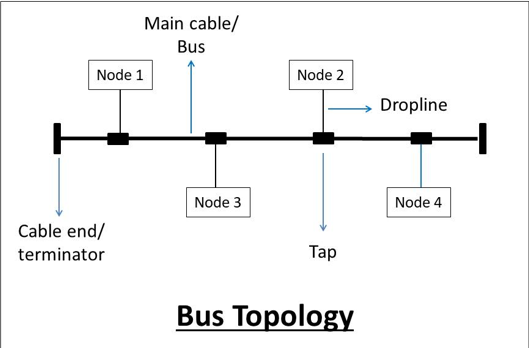
When it comes to Standard Network Topologies, what is a Ring Topology?
Imagine a group of people standing in a circle, and they pass around a special token (like a talking stick). Only the person holding the token can speak or send data. It goes around in one direction.
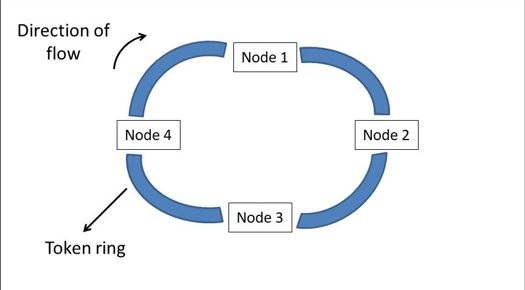
When it comes to Standard Network Topologies, what is a Star Topology?
Picture a central hub or device (like a star) with spokes connecting to all the other devices. All communication goes through this central hub. It's like a hub and spokes on a wheel.
The most common topology out of all of them
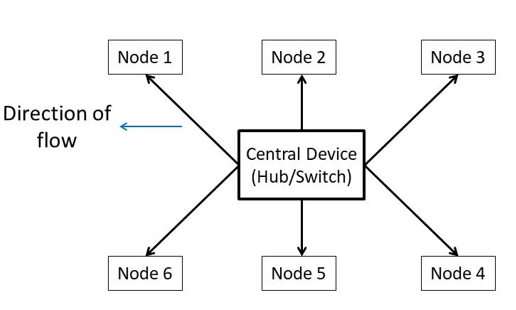
When it comes to Standard Network Topologies, what is a Mesh Topology?
Think of it as everyone holding hands with everyone else in a big circle. Each device is directly connected to every other device. It's like having multiple paths to reach anyone.
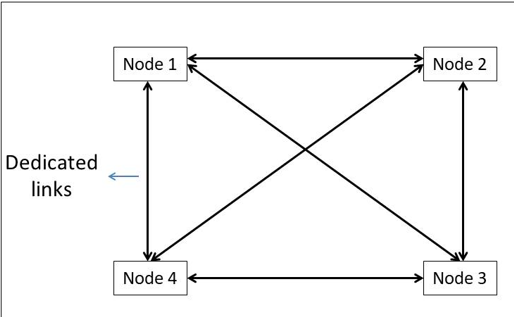
When it comes to Standard Network Topologies, what is a Tree Topology?
Combine the bus and star. There's a central hub (like a tree trunk), and from that hub, branches (like spokes) connect to smaller hubs or devices. It forms a hierarchical structure.
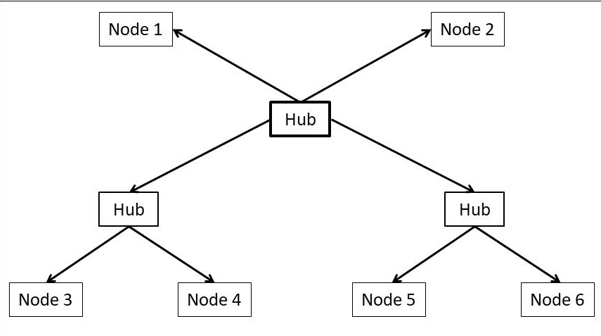
When it comes to Standard Network Topologies, what is a Hybrid Topology?
This is like mixing and matching. You can have parts of your network set up as a star, other parts as a ring, and maybe some devices in a mesh. It's about using different topologies where they make the most sense for your network needs.
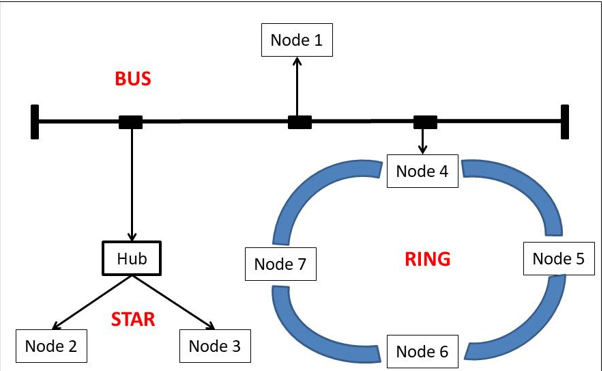
What is IANA?
They hand out all the IP addresses to all the devices. The Internet Assigned Numbers Authority. They manage ALL IP addresses, as well as distribute IP addresses to all the devices.
What are the 2 things circuits can be?
On = 1
OR
Off = 0;
Its binary
What is the structure of an IP Address
A way of giving “Addresses” to devices on a computer network, kind of like how everyone has their own phone number.
Your phone # is a way that distinguishes your phone from my phone.
When it comes to the structure of an IP address, what is dotted decimal notation?
IP addresses are often written in a format like 192.168.0.1, where each part is separated by dots. This makes it easier for people to read and remember.
When it comes to the structure of an IP address, what does Four “Octets” mean"?
An IP address is made up of four parts, and each part represents 8 bits of info.
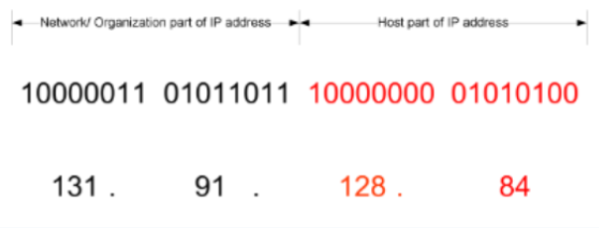
When it comes to the structure of an IP address, what is the first half and the last half of the IP Address?
The first part of the IP address identifies the network or the organization.
The second part identifies the specific device (like your computer) on that network aka the “Host” part.

What is the special IP address 255.255.255.255?
This address is like sending a message to everyone on your local network. It’s a way for one device to broadcast to all other devices
What is the special IP address 0.0.0.0?
Think of this is a default route. It’s like saying “I don’t know where to send this, please figure it out”.
What is the special IP address 127.0.0.1?
This is your own computers IP address, often referred to as “localhost”. When your computer talks to itself, is uses this address
What is the special IP address where there are all 0s in the Host Part (the back half of the IP address)?
This represents the network address itself, like the main office of a company
What is the special IP address where there are all 1’s in the Host Part (the back half of the IP address)?
This is a special kind of braodcast that goes to all devices on a network. However, it’s often blocked by routers to prevent misuse.
What layer of the OSI model deals with Classless Interdomain Routing (CIDR)?
Network Layer (Layer 3)
What is Classless Interdomain Routing (CIDR)?
Class Interdomain Routing is like a flexible way of managing and organizing internet addresses.
It allows you to be precise about how many devices can be on a network and makes it easier to manage and allocate internet addresses efficiently.
How does Classless Interdomain Routing (CIDR) work?
Normally, an internet address is written like 73.5.0.0, right? Well, with CIDR, we add something like "/17" to the end, which tells us how big the slice is.
For example, 73.5.0.0/17 means the first 17 bits are for the network part, and the rest are for the specific devices (hosts) on that network.
Your computer is like one of those devices, and there are 32 bits available in total.
So, if you have 17 bits for the network, that leaves 15 bits for the hosts (32 - 17 = 15).
And here's the cool part: With 15 bits for hosts, you can have 2^15, which is 32,768 different devices on that network.
What are the 5 main tasks of the Transport Layer
Segmentation into Datagrams (Breaks data into smaller, manageable pieces)
End-to-end reliability (Makes sure the package gets to its destination)
Multiplexing (The reason you can do multiple tasks on your computer at once)
Flow Control (The receiver controls how fast the speed of the incoming data is, NOT the sender)
Connection Establishment (Making sure both devices are connected and ready to have a conversation aka share data between them)
If you have 17 bits available for the network (73.5.0.0/17), how many bits are available for the host?
Your computer has 32 available bits
So, if you have 17 bits for the network, that leaves 15 bits for the hosts (32 - 17 = 15).
(Host bits = Computer bits - Network Bits)
With 15 bits for hosts, you can have 2^15, which is 32,768 different devices on that network.
What are the 2 main Transport Layer Protocols?
TCP and UDP
What does TCP & UDP stand for?
Transmission Control Protocol & User Datagram Protocol